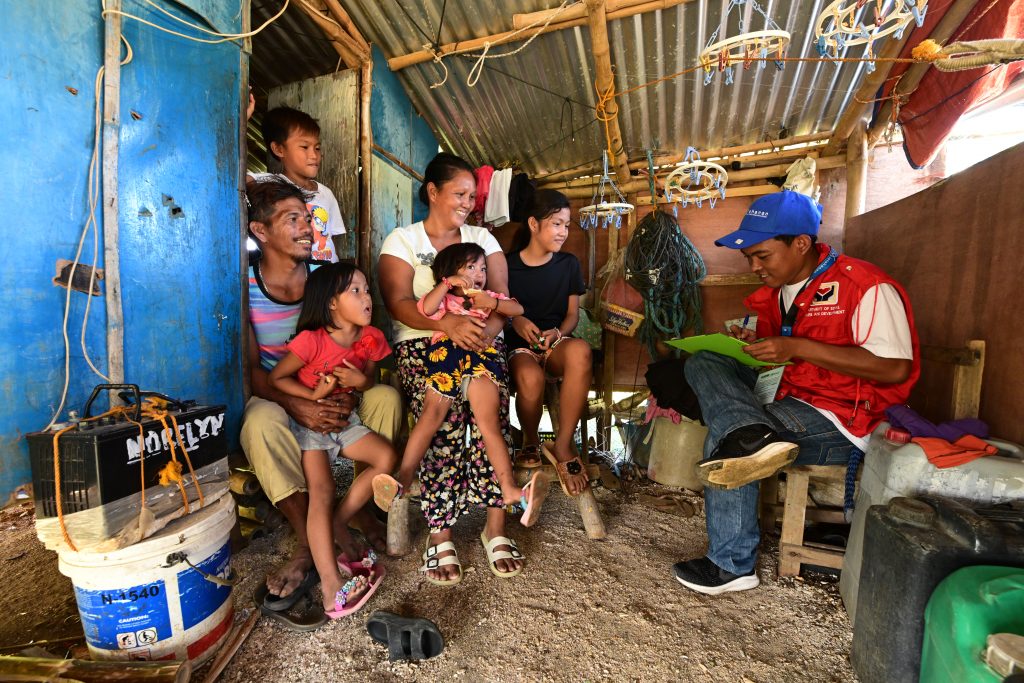I. Program Overview

What is Listahanan?
Listahanan, or the National Household Targeting System for Poverty Reduction, an information management system that uses empirical methods to compile a database of who and where the country’s poor are.
This database may be accessed by National Government Agencies and other stakeholders of Social Protection, so that they can find out who may benefit from their programs and policies.
Why do we need a targeting system?
We need a targeting system because resources are limited. Use of these resources on programs that seek to reduce poverty will have less impact and will be wasted if they do not reach the poor who need them the most. A unified set of criteria for identifying the poor would enable convergence and complementation of social protection programs in addressing the different dimensions of poverty. This will maximize the impact of social protection programs and, at the same time, minimize wastage of resources.
What are the objectives of Listahanan?
Listahanan aims to:
*Formulate a uniform set of criteria for identifying poor households in the country through scientific means;
*Maximize the benefits of social protection programs by developing evidence-based services to the poor;
*Minimize wastage of resources by ensuring that only those who are deserving benefit from social protection programs
*Facilitate sharing of the high quality database to public and private social protection stakeholders
What are the legal basis of Listahanan?
Department Order No. 1 Series of 2008. Adoption of the Targeting System for Poverty Reduction as a Mechanism for Identifying Potential Beneficiaries of the DSWD Social Protection Programs and Services.
National Statistical Coordination Board (NSCB) Resolution No. 18 series of 2009. Recognizing and enjoining support to the Targeting System being implemented by the DSWD as a Tool to Identify Beneficiaries of Social Protection Programs.
Executive Order 867 series of 2010. Providing for the Adoption of the NHTS-PR as the Mechanism for Identifying Poor Households who shall be Recipients of Social Protection Programs Nationwide.
II. Projects/Services/Activities/Modalities

The data gathering process for the poverty database is called the Household Assessment, which is undertaken in four-phase cycles:
Preparatory Phase – involves the identification of areas to be
assessed and the data collection strategy appropriate for areas
identified.
All provinces, municipalities, and cities are covered by the household
assessment. The assessment strategy for rural classified barangays
shall be saturation i.e. all households will be assessed. Meanwhile, in
urban barangays saturation in identified pockets of poverty will
be used.
Also included in this phase are updating of the Proxy Means Test (PMT)
model, enhancement of the Listahanan information technology
systems, hiring and training of field staff, and orientation of LGUs, and
other project partners on the implementation of the assessment.
Data Collection and Analysis Phase – conduct of home visits to
collect basic information of household members using the Household
Assessment Form (HAF). The data collected using the form is encoded
directly to the database using a data entry application.
Once the household information is encoded, the collected data is
endorsed for PMT processing where the household income is
estimated. The households are then classified as poor and non-poor,
applying the official provincial poverty threshold.
Validation and Finalization Phase – the initial list of poor households
is generated and posted in conspicuous places within the barangay for
the community to review. Households who were not visited during the
assessment are given the chance to appeal and be assessed.
Report Generation Phase – after the list of poor is finalized, the NHTO
produces the ‘profile of the poor” and disseminates this to NGAs, LGUs,
NGOs, and other social protection stakeholders.
Report Generation Phase – after the list of poor is finalized, the NHTO
produces the ‘profile of the poor” and disseminates this to NGAs, LGUs,
NGOs, and other social protection stakeholders.
III. Contact Person/s
DARWIN T. CHAN
Planning Officer IV / OIC-Chief, Policy and Plans Division Chief
(072) 687-8000 local 244
ppd.fo1@dswd.gov.ph
JOAN N. DACUMOS
Project Development Officer IV / Regional Field Coordinator / Section Head, National Household Targeting Section
(072) 687-8000 local 221
nhts.fo1@dswd.gov.ph
JAYMANTE PEARL B. APILADO
Administrative Assistant III/Listahanan Information Officer
(072) 687-8000 local 221
nhts.fo1@dswd.gov.ph
IV. Links
Executive Order
Executive Order No. 867
https://listahanan.dswd.gov.ph/wp-content/uploads/2020/11/Executive-Order-No.-867.pdf
Administrative Orders
Administrative Order Number 19 Series of 2021 – Internal Guidelines on the Sharing of Data Generated from Listahanan
AO No. 19 Series of 2021 – Internal Guidelines on the Sharing of Data Generated from Listahanan.pdf
Memorandum Circulars
Memorandum Circular No. 15 Series 2017 – Guidelines on the Sharing of Data Generated from the Listahanan Database to External Stakeholders
MC No. 15 Series 2017 – Guidelines on the Sharing of Data Generated from the Listahanan Database to External Stakeholders.pdf
Department Order
Adopting a Household Targeting System for Poverty Reduction for DSWD Social Protection Programs and Services
https://listahanan.dswd.gov.ph/wp-content/uploads/2020/11/Department-Order-No.-1-s.-2008.pdf
Attached IEC Materials
Listahanan 3 Info Kit
Listahanan 3 Regional Profile of the Poor
Listahanan 3 Regional Briefer
Listahanan 3 Provincial Briefers
- Ilocos Norte Provincial Briefer
- Ilocos Sur Provincial Briefer
- La Union Provincial Briefer
- Pangasinan Regional Briefer
Listahanan 3 Data Sharing AVPs
Listahanan 3 Data Sharing process for Local Government Units
Listahanan 3 Statistics Request for Partners/Stakeholders
Listahanan 3 Statistics Request for Researcher

